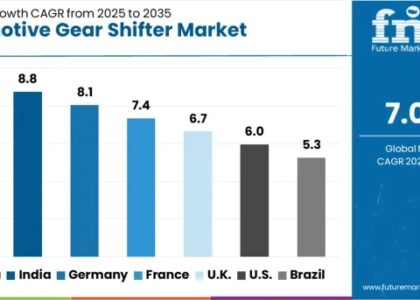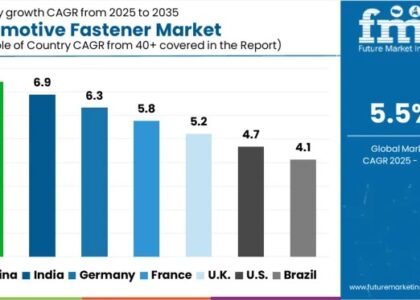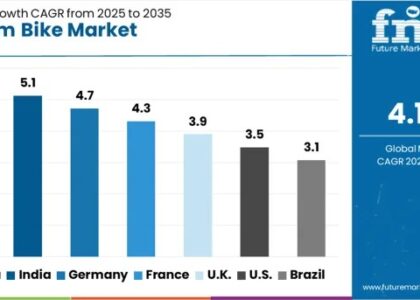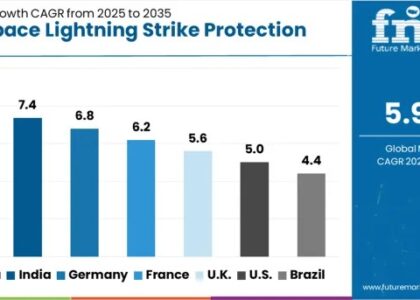The modified milk ingredients market is expected to develop at a 6.4% compound annual growth rate (CAGR) between 2022 and 2032, with revenues of US$1085.6 million in 2022 and US$1889.6 million in 2032.
Modified milk ingredients are substances derived from milk mostly obtained after undergoing the process of vaporization, fermentation, fat separation, or homogenization. Milk is a complex mixture of substances constituted mainly of milk sugar lactose and goblets of fat and proteins dissolved in water.
Milk has a limited shelf life and to counter this problem components of milk such as milk solids were separated ages ago, thereby introducing the concept of modified milk ingredients that showcased longer shelf life. This ultimately created a new range of milk-processing industries.
Some of examples of modified milk ingredients are dried whole milk, skim milk, partially skim milk, skim milk powder, whey proteins, caseins, butter oil, anhydrous butter oil, cultured milk products, and milk protein concentrates. The main force driving the market is the convenience and low cost of operations offered by modified milk ingredients in the making of dairy products such as ice cream and cheese.
To Get a Sample Copy of the Report visit@ https://www.futuremarketinsights.com/reports/sample/rep-gb-12937
While the use of modified milk ingredients would be found unappealing by consumers that prefer fresh and natural foods, the products’ offering of health benefits and safe processing overpower the latter. The global modified milk ingredients market is projected to register a CAGR 4% more than that of the global milk market over the forecast period.
Rising Cases of Milk Adulteration to Grow Preference for Modified Milk Ingredients and hence bolster the Market’s Growth
The demand for milk keeps on growing to the extent that it surpasses the supply. This is majorly due to the explosion of population and urbanization. In order to reap more profits and to cover the expense generated due to natural calamities such as feed shortages, famine, and others, producers/farmers and vendors are tempted to adulterate the milk.
Fraudulent measures are implemented to augment the supply leading to adulteration of milk that can be harmful to both adults and children. Astonishingly, nearly 60% of the global milk produced is deemed to be adulterated with impurities ranging from water to chemical additives.
Several reports of adulteration in milk have been reported in the recent past. The common chemical adulterants, which have been reported in milk, are sodium hydroxide, hydrogen peroxide, soap detergents, formalin, cane sugar, gelatine, starch, synthetic dyes, and Urea.
Modified milk ingredients are much safer compared to whole milk as they are derived from genuine milk and undergo procedures that separate out the contaminants during the process. Adding to it, the modified milk ingredients market has a lot of certified brands to choose from, thereby allowing consumers to partake in good quality and safe dairy products.
Global Modified Milk Ingredients: Key Players
Some of the key players manufacturing modified milk ingredients are as follows – Nestle SA, Lactalis International, Danone S.A., Fonterra Co-operative Group, FrieslandCampina, Arla Foods, Dean Foods, Yili Group, China Mengniu Dairy Co., Ltd., and many others.
COVID-19 Impact
The novel coronavirus rather had a minimal impact on the modified milk ingredients market as compared to the huge losses suffered by the global milk industry. The modified milk ingredients fall under the FMCG category of conservable items and therefore, witnessed a sharp rise in sales figures during the pre-lockdown phase in the first quarter of 2020. End use products pertaining to infant food, dietary food, and bakery applications sustained the market’s functioning.
The modified milk ingredients market report offers a comprehensive evaluation of the market. It does so via in-depth qualitative insights, historical data, and verifiable projections about market size. The projections featured in the report have been derived using proven research methodologies and assumptions.
By doing so, the research report serves as a repository of analysis and information for every facet of the modified milk ingredients market, including but not limited to: regional markets and segments.
Browse full Report@ https://www.futuremarketinsights.com/reports/modified-milk-ingredients-market
Key Segments
Product Type:
- Calcium reduced Skim Milk
- Casein
- Caseinates
- Cultured Milk Products
- Milk Serum Products
- Ultra-filtered Milk
- Whey
- Whey Butter
- Whey Cream
- Others
Form:
- Liquid
- Concentrated
- Dry
- Frozen
- Reconstituted
Application:
- Food & Beverages
- Cosmetics and Personal Care
- Nutraceuticals
- Pharmaceuticals
- Others
Distribution Channel:
- B2B
- HoReCa
- End Use Industries
- B2C
- Hypermarket/Supermarket
- Convenience Store
- Specialty Store
- Online Retail
- Others
About Future Market Insights (FMI):
Future Market Insights, Inc. (ESOMAR certified, Stevie Award – recipient market research organization, and a member of Greater New York Chamber of Commerce) provides in-depth insights into governing factors elevating the demand in the market. It discloses opportunities that will favor the market growth in various segments on the basis of Source, Application, Sales Channel, and End Use over the next 10 years.
Contact Us:
Future Market Insights Inc.
Christiana Corporate, 200 Continental Drive,
Suite 401, Newark, Delaware – 19713, USA
T: +1-845-579-5705
For Sales Enquiries: sales@futuremarketinsights.com
Browse Other Reports: https://www.futuremarketinsights.com/reports
LinkedIn| Twitter| Blogs





